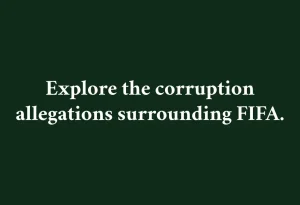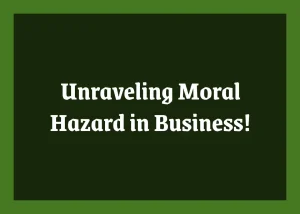Conflicts of interest can arise in various settings and can have far-reaching consequences. They can occur in personal relationships, professional environments, and even in governmental institutions. Conflicts of interest can be defined as situations where an individual or organization’s personal interests or biases may interfere with their ability to act in the best interest of others. The result is often a breach of trust or a violation of ethical principles.
In today’s complex world, it is essential to understand conflicts of interest and how they can be addressed. Whether you are a business owner, a public official, or a concerned citizen, developing a comprehensive understanding of conflicts of interest is crucial. By doing so, you can identify potential conflicts of interest and take steps to address them before they cause harm.
In this blog post, we will explore the ins and outs of conflicts of interest. We will define what constitutes a conflict of interest, examine how it can be identified, and explore how it can be addressed.
Earn a certificate in your dream career for an affordable price at IAP Career College today!
Definition of conflict of interest
A conflict of interest refers to a situation where an individual or organization is involved in multiple interests, and one of those interests could potentially influence their ability to act impartially or objectively in a given situation.
In other words, it occurs when an individual or organization has a personal or financial interest that could interfere with their professional obligations or responsibilities. Conflicts of interest can arise in various contexts, including business, politics, healthcare, and education. As such, it is essential to identify and address conflicts of interest to ensure that all parties involved act with integrity and maintain ethical standards.
Different types of conflicts
Conflict of interest is a common issue in many workplaces that can lead to ethical, legal, and financial consequences. It occurs when an individual’s personal interests or relationships interfere with their ability to make impartial decisions that are in the best interest of their organization or clients.
There are two different types of conflicts that can arise in the workplace: a real conflict of interest and a perceived conflict of interest. A real conflict of interest involves a situation where the individual’s personal interests are in direct conflict with the interests of their organization or clients.
A perceived conflict of interest, on the other hand, occurs when others perceive that the individual’s personal interests could potentially influence their decision-making, even if there is no actual conflict. It is crucial for individuals to recognize and address conflicts of interest to maintain their professional integrity and avoid negative consequences for themselves and their organizations.
Examples of conflicts of interest
A conflict of interest is a situation where an individual or organization may have competing interests or loyalties that could influence their decision-making in a way that is not in the best interest of those they serve. Here are three examples of conflicts of interest in different settings:
- A financial advisor who recommends investment products to their clients that are affiliated with the advisor’s own firm, rather than objectively selecting the best options for the client’s needs.
- A journalist who writes a story about a company they own stock in, without disclosing their ownership or potential bias.
- A government official who has a personal relationship with a company bidding for a contract, potentially leading to favoritism in the selection process.
It is important to identify and address conflicts of interest to maintain trust and transparency in professional relationships.
In some cases, disclosure and transparency may be sufficient, while in others a full recusal or removal from the situation may be necessary. Establishing clear policies and guidelines for addressing conflicts of interest can help prevent them from occurring and mitigate their impact when they do arise.
Why conflicts of interest matter
Understanding conflicts of interest is crucial in maintaining ethical and professional practices in any organization. A conflict of interest refers to situations where an individual or organization has competing interests or loyalties that may interfere with their ability to make impartial and objective decisions.
This can range from financial interests, personal relationships, or any other factors that could create a bias in decision-making. When left unaddressed, conflicts of interest can lead to ethical lapses, loss of credibility, and even legal consequences.
Therefore, it is important for organizations to have policies and procedures in place to identify, prevent and manage conflicts of interest. By addressing conflicts of interest effectively, organizations can ensure that their decisions are based on merit and promote transparency and accountability.
How to identify conflicts
Identifying conflicts of interest is a crucial aspect of maintaining ethical and professional standards in any organization. To begin with, it is essential to understand what constitutes a conflict of interest. A conflict of interest occurs when an individual’s personal interests or relationships interfere with their ability to act in the best interest of the organization they represent.
There are several ways to identify potential conflicts of interest, including examining personal relationships, financial transactions, and other external factors that may influence an individual’s decision-making process. By proactively identifying and addressing conflicts of interest, organizations can maintain transparency and accountability, protect their reputation, and ensure that they are acting in the best interest of their stakeholders.
Addressing conflicts of interest proactively
Addressing conflicts of interest proactively is crucial in any professional setting. A conflict of interest arises when an individual’s personal interests or financial gains come into conflict with their professional responsibilities.
These conflicts can arise in various forms, such as accepting gifts or favors, pursuing personal business deals, or having close personal relationships with colleagues or clients. To ensure that conflicts of interest don’t compromise the integrity of the work environment, it’s essential to implement proactive measures.
This can include creating clear policies and guidelines for employees to follow, requiring regular disclosure of potential conflicts, and providing training and education on ethical behavior. By taking these steps, organizations can promote a culture of transparency and integrity, and prevent conflicts of interest from undermining the trust of clients, stakeholders, and the public.
Creating a conflict of interest policy
Creating a conflict of interest policy is an essential step in maintaining ethical standards in any organization. A conflict of interest arises when an individual or organization is involved in multiple interests, one of which could potentially influence their decision-making in the other.
Such situations can lead to a breach of trust, loss of credibility, and legal implications. A well-crafted policy can help identify potential conflicts of interest and provide guidance on how to manage them. The policy should clearly define what constitutes a conflict of interest, outline procedures for disclosing and addressing conflicts, and establish consequences for violating the policy.
By implementing a robust conflict of interest policy, organizations can demonstrate their commitment to transparency, accountability, and integrity while minimizing the risk of reputational damage and legal consequences.
Training employees on conflicts
When it comes to managing a business or organization, it’s crucial to understand the importance of addressing conflicts of interest. One way to do so is by training employees on conflicts of interest. Conflict of interest training can help employees identify and prevent potential conflicts before they arise.
This type of training can also teach employees how to handle conflicts of interest that do arise in a professional and ethical manner. By providing this training to employees, organizations can demonstrate their commitment to ethical business practices and avoid potential legal and financial consequences. Overall, conflict of interest training is a valuable investment in the success and integrity of any business or organization.
Disclosing conflicts of interest
Disclosing conflicts of interest is a crucial step in addressing and mitigating the risks associated with this ethical dilemma. A conflict of interest arises when an individual’s personal interests or relationships may interfere with their professional obligations or judgment.
It is essential to be transparent about any potential conflicts of interest to ensure that all parties involved have a clear understanding of the situation. Disclosing such conflicts can help prevent any perceived or actual bias and maintain trust and integrity in professional relationships.
It is also important to have a plan in place to address and manage potential conflicts of interest to minimize their impact on decision-making processes. By acknowledging and addressing conflicts of interest, individuals and organizations can maintain ethical standards and promote transparency and fairness in all aspects of their work.
Maintaining transparency and accountability.
Maintaining transparency and accountability is crucial when addressing conflicts of interest. In order to properly handle conflicts of interest, it is important to establish clear policies and guidelines that outline how potential conflicts will be identified and managed.
Additionally, individuals should be required to disclose any potential conflicts of interest that may arise in the course of their work. This information should be made available to stakeholders and the public to ensure transparency.
It is also important to establish a system of checks and balances to ensure that individuals are held accountable for their actions and that conflicts of interest are appropriately addressed. By maintaining transparency and accountability, organizations can promote ethical behavior and ensure that conflicts of interest do not compromise the integrity of their work.
Conclusion: Managing Conflict of Interest in Professions.
In conclusion, conflicts of interest are a pervasive issue in many industries and can have serious consequences if not addressed appropriately. It is crucial for professionals to understand what conflicts of interest are, how to identify them, and how to address them. By implementing policies and procedures that promote transparency and ethical behavior, organizations can minimize the risk of conflicts of interest and maintain the trust of their clients and stakeholders. It is the responsibility of all professionals to act with integrity and to prioritize the best interests of their clients or employer above their own personal interests.





